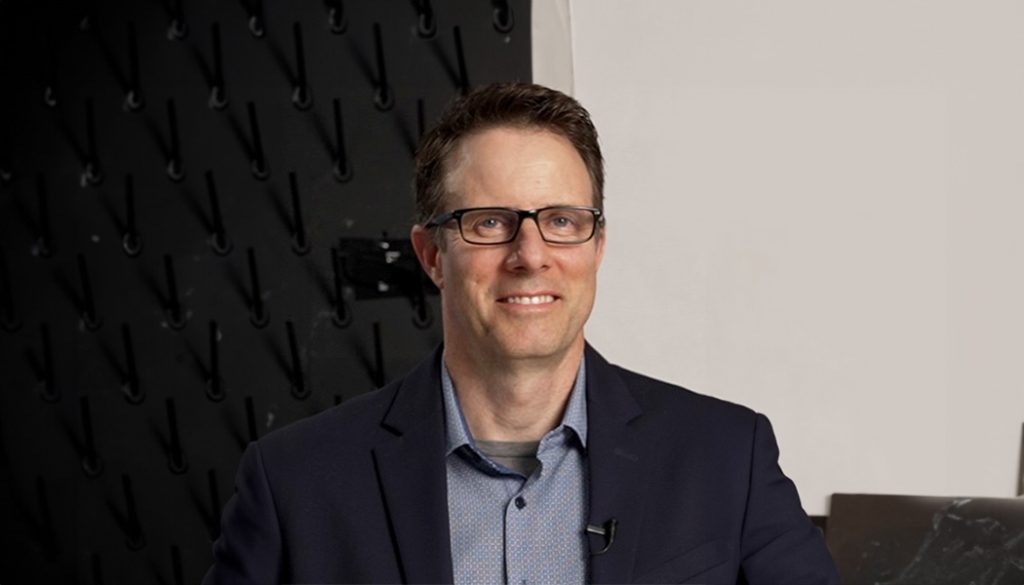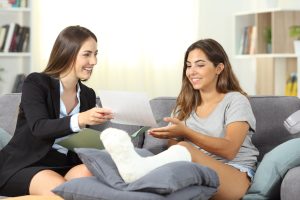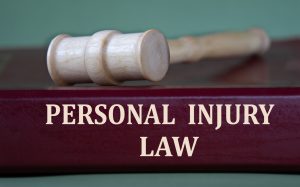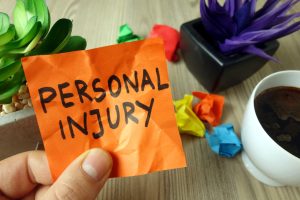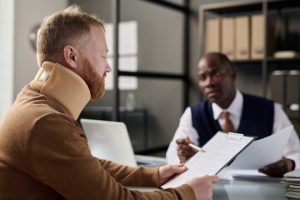Dr. Thomas Jenkyn, PhD, PEng at TLS Forensic, London, ON uses advanced collision stimulation to evaluate and reconstruct different accidents along with offering injury analysis. Lawyer Monthly recently caught up with Dr. Thomas to explain...
Many thanks for taking the time to talk with Lawyer Monthly Dr. Thomas. Firstly could you provide our readers with some insight into your professional background and education?
Thank you for your interest in my company. I am the founder and Senior Engineer at TLS Forensic Biomechanics and Engineering Ltd. With over 20 years as a licensed professional engineer, I have dedicated more than 15 of those years to providing expertise in forensic biomechanics for civil and criminal litigation. My focus is on personal injury, auto collisions and aviation accidents. The overarching goal of my company is to bring the same level of scientific knowledge and rigor found in academia to the practice of forensic biomechanics.
My academic background includes graduate training in Aerospace Engineering at the University of Toronto and Biomedical Engineering at the University of Strathclyde in the United Kingdom. I further enhanced my expertise during a Post-Doctoral Fellowship in Biomechanics, Medical Imaging and Orthopaedics at the Mayo Clinic in Rochester, Minnesota, USA.
I currently hold a tenured faculty position at the University of Western Ontario, where I have research and teaching appointments in Mechanical Engineering, Kinesiology, and Surgery. Since 2002, I have conducted peer-reviewed research into the biomechanics of injury. Western Mechanical Engineering is a leader in the field of Biomechanical Engineering, renowned for its cutting-edge research and innovative educational programs. The department provides a robust curriculum that combines rigorous engineering principles with practical applications in biomechanics, preparing students to excel in this specialized field.
What are your areas of expertise and professional experience relating to providing expert opinion and analysis?
TLS Forensic has expertise and extensive experience providing expert opinion and analysis in Injury Biomechanics, specifically focusing on the application of physics and engineering principles to understand the motion and loading of biological tissues, body segments, and bodies overall. In the context of forensic biomechanics, we specialize in analyzing vehicle collisions and aviation accidents to determine how the movement of the vehicles impacts the occupants, leading to injury.
At TLS Forensic, we conduct detailed analyses of vehicle collisions using simulation methods. These simulations provide critical data on the accelerations and trajectories of the vehicles involved, which serve as inputs for the biomechanical analysis. By examining how occupants move within the vehicle, the accelerations their body parts experience and the biomechanical loads imposed on their bodies, we determine if and when injury occurs.
When did you start providing expert opinion in Canada and North America and how did this come about? Can you provide our readers with an introduction to TLS Forensic and its formation?
TLS Forensic started providing expert opinions over 15 years ago in response to requests from the legal community, particularly in the field of personal injury. There was a significant demand for more quantitative answers regarding how and why injuries occurred during incidents such as auto collisions and aviation accidents. While I was already conducting these analyses within academia, these analyses were not being fully leveraged by the personal injury legal community. Thus, TLS Forensic Biomechanics and Engineering Ltd was established to bridge the gap between academic research and its practical application in a legal context. Since 2008, TLS Forensic has been providing specialized forensic biomechanics expertise for civil and criminal litigation, assisting with personal injury cases, auto collisions and aviation accidents across the USA and Canada. TLS Forensic is dedicated to delivering precise, quantitative analyses to help the legal community understand the biomechanics of injury and better serve their clients.
What type of services does TLS Forensic offer and for which type of client?
TLS Forensic offers a comprehensive range of forensic biomechanics services tailored to clients involved in civil and criminal litigation, including personal injury cases stemming from vehicular and aviation accidents, slip and falls, falling objects, industrial and recreational accidents. Our expert services cater to attorneys, insurance companies, and other legal professionals seeking detailed and scientifically rigorous analysis of injury causation.
TLS Forensic reconstructs accidents based on testimony, police reports, and on-site inspections and experimentation. Utilizing physics-based accident reconstruction software, we draw on an extensive database of vehicle physical properties and deformation information to analyze the forces at play. Our expertise extends to pedestrian and bicycle accident reconstruction, ensuring a thorough investigation into various types of collisions.
The focus is always on biomechanics. Our accident reconstruction seamlessly transitions into biomechanical simulations to determine how specific forces and accelerations impacted the body. We analyze whether injuries resulted from impacts, twists, crushes, or bends and assess the consistency of the injury with the testimony provided. By examining medical records and imaging such as x-rays, CT scans, and MRIs, we identify the unique characteristics of injuries and the forces that caused them.
TLS Forensic is committed to delivering precise, timely and scientifically grounded analyses to support the legal community in making informed decisions about injury causation.
Our services include:
Accident Reconstruction: Utilizing testimony, police reports, and on-site investigation to reconstruct vehicle accidents, including automotive, motorcycle, trucking and bicycle collisions.
Biomechanical Simulation: Using state-of-the-art technology to model the accident scene and quantify the biomechanical loads on the body, ensuring accurate injury causation analysis.
Detailed Reporting: Providing detailed biomechanical reports, with extensive review of the scientific literature, that address whether the forces and accelerations involved were sufficient to cause the injuries or trauma claimed.
TLS Forensic Training: TLS Forensic is expanding its services to include training programs for lawyers and professionals in personal injury litigation. These training sessions aim to enhance the legal community's understanding of the advanced methods used in accident reconstruction and biomechanical simulations. Participants gain insight into the forces at play during vehicular collisions, how these forces influence occupant movement within a vehicle and the critical factors, such as seatbelt usage, that impact injury outcomes. This comprehensive training equips legal professionals with the knowledge necessary to effectively evaluate and argue personal injury cases based on rigorous scientific analysis.
The TLS Forensic team uses ‘state-of-the-science’ industry tools, practices and software during investigations and research. Can you explain a little more about the technology and science you use and some of the benefits these provide both plaintiff and defense in civil and criminal cases involving injury biomechanics across North America?
At TLS Forensic Biomechanics and Engineering, we use state-of-the-science software, including Human Vehicle Environment (HVE; Engineering Dynamics Corporation) and Graphical Articulated Total Body (GATB; Collision Engineering Associates), to conduct advanced simulations of vehicle collisions, occupant biomechanics, and pedestrian biomechanics. HVE is widely recognized as the industry standard for collision and accident reconstruction and simulation. It has been validated against both staged and real-world collisions (Day, 1999; Day, 1994), ensuring its reliability and accuracy.
The biomechanics of people involved in collisions—whether they are vehicle occupants, cyclists or pedestrians—are simulated using the GATB software module within the HVE package (Grimes, 1997; Cheng et al, 1998). This module uses virtual human models, essentially advanced virtual crash test dummies, to represent each person involved in a collision. These models allow us to simulate the physical forces and accelerations exerted on their body segments during the incident.
By leveraging state-of-the-science technology, TLS Forensic provides objective assessments that are based on scientific principles. This objectivity is valuable for both plaintiff and defense as it helps to eliminate bias and focuses on the factual evidence. The HVE and GATB software allows us to reconstruct and simulate vehicle collisions with high accuracy. HVE's validation against real-world data ensures that our reconstructions are both reliable and scientifically sound. The advanced simulations produced by HVE and GATB provide visual and quantitative evidence that can be presented in court. These simulations help juries and judges visualize the events of the collision and understand the biomechanical forces involved, which can be pivotal in both civil and criminal cases.
What do you consider the essential elements for a great expert report?
In our opinion, the essential elements for a great expert report in the field of forensic biomechanics are precision, clarity, scientific rigor and relevance. At TLS Forensic, our reports are crafted to meet these high standards, ensuring they provide valuable insights for both plaintiffs and defendants in civil and criminal cases. Here are the key elements that we consider essential:
Accuracy and Precision: Our reports leverage state-of-the-science software packages such as Human Vehicle Environment (HVE) and Graphical Articulated Total Body (GATB) to ensure accurate and precise reconstructions and simulations. These tools allow us to meticulously analyze vehicle collisions and the resulting biomechanics, providing a reliable foundation for our conclusions.
Clarity and Understandability: A great expert report must be clearly written and easily understood by non-experts. We present complex biomechanical data and findings in a straightforward manner, often using visual aids and simulations to illustrate key points. This helps judges, juries and attorneys grasp the nuances of the case without requiring specialized knowledge.
Scientific Rigor: Our analyses are grounded in validated scientific methods and supported by extensive research. HVE and GATB software have been validated against real-world collisions (Day, 1999; Day, 1994) and rigorous academic studies (Grimes, 1997; Cheng et al, 1998), ensuring that our findings are robust and reliable.
Relevance to the Case: We ensure that our biomechanical assessments are directly relevant to the incident, whether it involves vehicular or aviation accidents, slip and falls or other types of injuries. Our focus on the biomechanics of injury—considering factors such as impact, twist, crush, or bend—ensures that the report directly addresses the issues at stake.
Comprehensive Analysis: Our reports provide a comprehensive analysis that covers both accident reconstruction and biomechanical simulation. We reconstruct the incident using HVE and then delve into the biomechanical effects on the occupants or pedestrians using GATB. This dual approach ensures that all aspects of the incident are thoroughly examined.
Objective and Impartial: Objectivity is crucial in expert reporting. Our analyses are based on scientific data and methodologies, free from bias. This impartiality enhances the credibility of our reports and ensures that they are respected by all parties involved.
Detailed and Supported Conclusions: The conclusions in our reports are detailed and well-supported by the data and simulations. We draw on decades of laboratory testing, scientific literature and our own professional expertise to provide a well-rounded assessment of the injury mechanisms and their consistency with the claimed injuries.
By incorporating these essential elements, TLS Forensic ensures that our expert reports are not only scientifically sound but also clear, relevant and highly valuable in legal contexts. Our commitment to excellence in forensic biomechanics helps provide the legal community with the detailed, accurate insights needed to make informed decisions.
How has injury analysis and accident reconstruction changed in the last 5 years and which areas are you most excited about regarding science and technology advancements in personal injury litigation cases?
In the last five years, injury analysis and accident reconstruction have seen significant advancements, driven largely by improvements in technology and simulation software. These changes have enhanced the precision, reliability, and comprehensiveness of forensic biomechanical analyses, offering new opportunities and tools for personal injury litigation cases.
The development and refinement of simulation software like Human Vehicle Environment (HVE) and Graphical Articulated Total Body (GATB) have been pivotal. These tools allow for more detailed and accurate reconstructions of accidents, incorporating a broader range of variables and scenarios. The GATB module within HVE has advanced the way we simulate the biomechanics of vehicle occupants and pedestrians. By using sophisticated virtual human models, we can more accurately predict how forces and accelerations impact different body segments during a collision, leading to a better understanding of injury mechanisms. The integration of large databases of vehicle properties, deformation characteristics and real-world crash data has improved the accuracy of reconstructions. This wealth of data allows for more precise simulations and better-informed analyses of how specific injuries occur. Improvements in medical imaging and diagnostic tools, such as high-resolution CT scans and MRIs, have provided more detailed information about injuries. This data can be directly integrated into biomechanical simulations, enhancing the accuracy of injury analysis.
What is the most interesting case you have worked on?
One of the most interesting cases we've worked on at TLS Forensic involved an aviation incident that allowed us to apply our expertise in biomechanics to a rather challenging context. TLS Forensic applies the same fundamental principles of injury analysis to the area of aviation biomechanics as it does with vehicle and personal injury cases.
In this particular case, the incident involved a commercial aircraft that experienced severe turbulence, leading to injuries among several passengers and crew members. The forces at play in an aviation context differ significantly from those in automotive accidents, involving complex dynamics such as rapid altitude changes, variations in air pressure and high-velocity impacts. However, the fundamental principles of biomechanics—analyzing the motion and loading of biological tissues—remain the same.
Our team reconstructed the incident using detailed flight data, passenger testimony and the aircraft's maintenance and design records. By integrating this information into our simulation software, we were able to model the aircraft's movements and the turbulence encountered during the flight.
Using the Human Vehicle Environment (HVE) and Graphical Articulated Total Body (GATB) software, we simulated the forces experienced by the passengers and crew. We created virtual human models to represent each individual involved, allowing us to analyze the specific biomechanical forces exerted on their bodies during the turbulence.
The medical records, including CT scans and MRIs of the injured parties, were meticulously reviewed. We correlated the observed injuries with the forces and accelerations identified in our simulations. This involved examining how different body parts were affected by the turbulence, whether the injuries were due to impacts with the aircraft interior or from abrupt movements within the confined space.
Our analysis revealed that the injuries were consistent with the severe forces experienced during the turbulence, validating the accounts provided by the passengers and crew. The comprehensive report detailed the biomechanical mechanisms leading to each injury, providing clear and scientifically supported evidence for use in the ensuing litigation.
The application of advanced biomechanical simulation tools in an aviation context provided a deeper understanding of how turbulence can cause specific injuries, offering insights that were invaluable for both the plaintiffs and the defense.
Beyond the litigation, our findings also contributed to recommendations for improving passenger and crew safety during turbulent conditions, highlighting the importance of seatbelt use and better securing of cabin equipment.
This case exemplified the versatility and applicability of our forensic biomechanics expertise. By extending our methods to the aviation industry, we demonstrated that even in vastly different environments, the same scientific rigor and analytical precision could yield critical insights into injury causation.
About TLS Forensic
TLS Forensic was founded by Dr. Thomas Jenkyn, PhD, PEng in 2008 and he heads up the TLS Forensic team. TLS Forensic (London, Ontario) has a single mission: to bring ‘state-of-the-science’, evidence-informed, mathematically rigorous analysis to the field of personal injury litigation. TLS Forensic experts leverage expertise in computer simulation and extensive experience with engineering principles to model a wide range of automobile, pedestrian accidents and personal injury events.
Contact:
TLS Forensic Biomechanics and Engineering Ltd
Phone: 1-877-314-0718
Email: info@tlsforensic.com
www.tlsforensic.com
Published by: www.lawyer-monthly.com - June 4th, 2024



